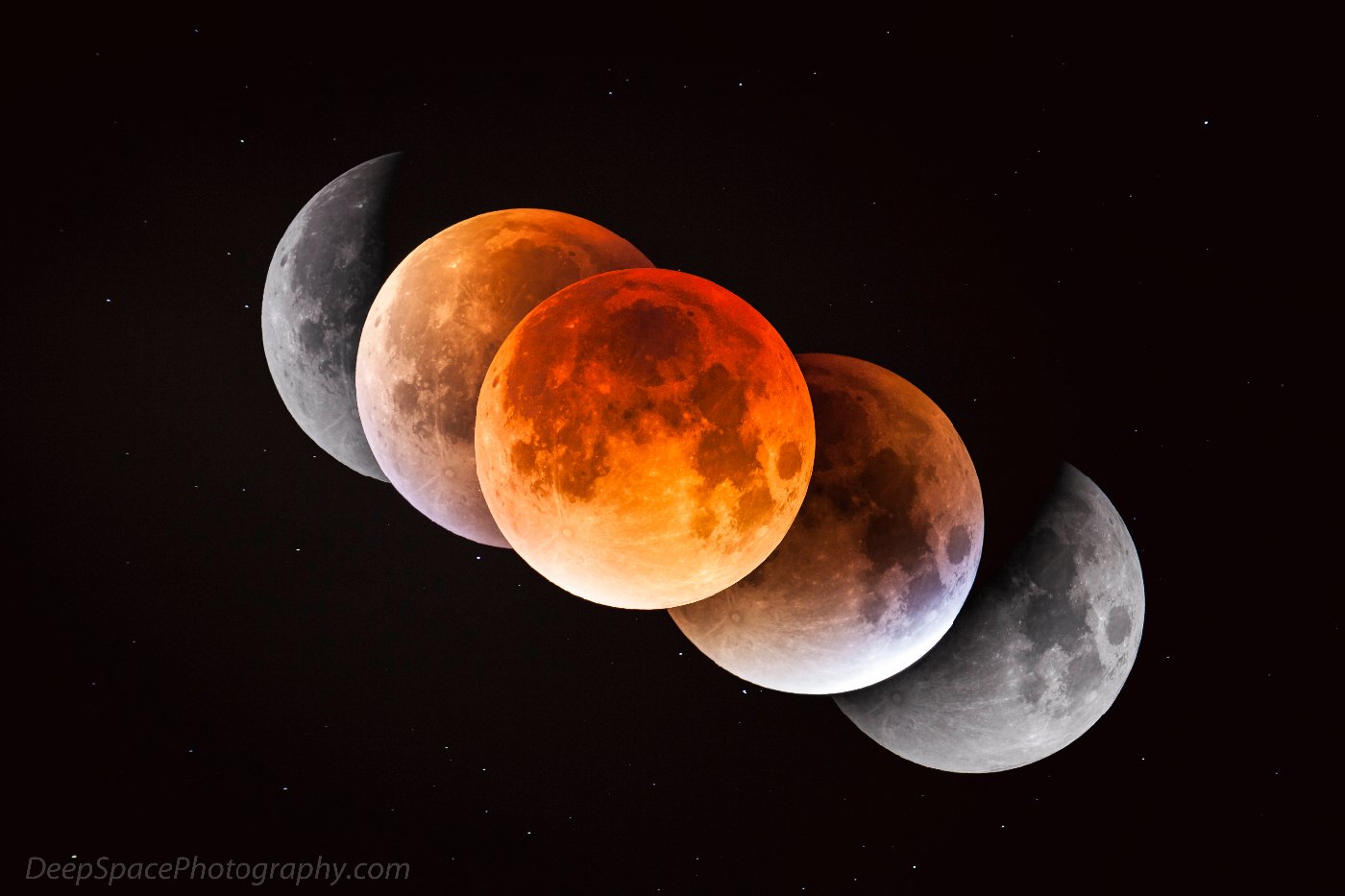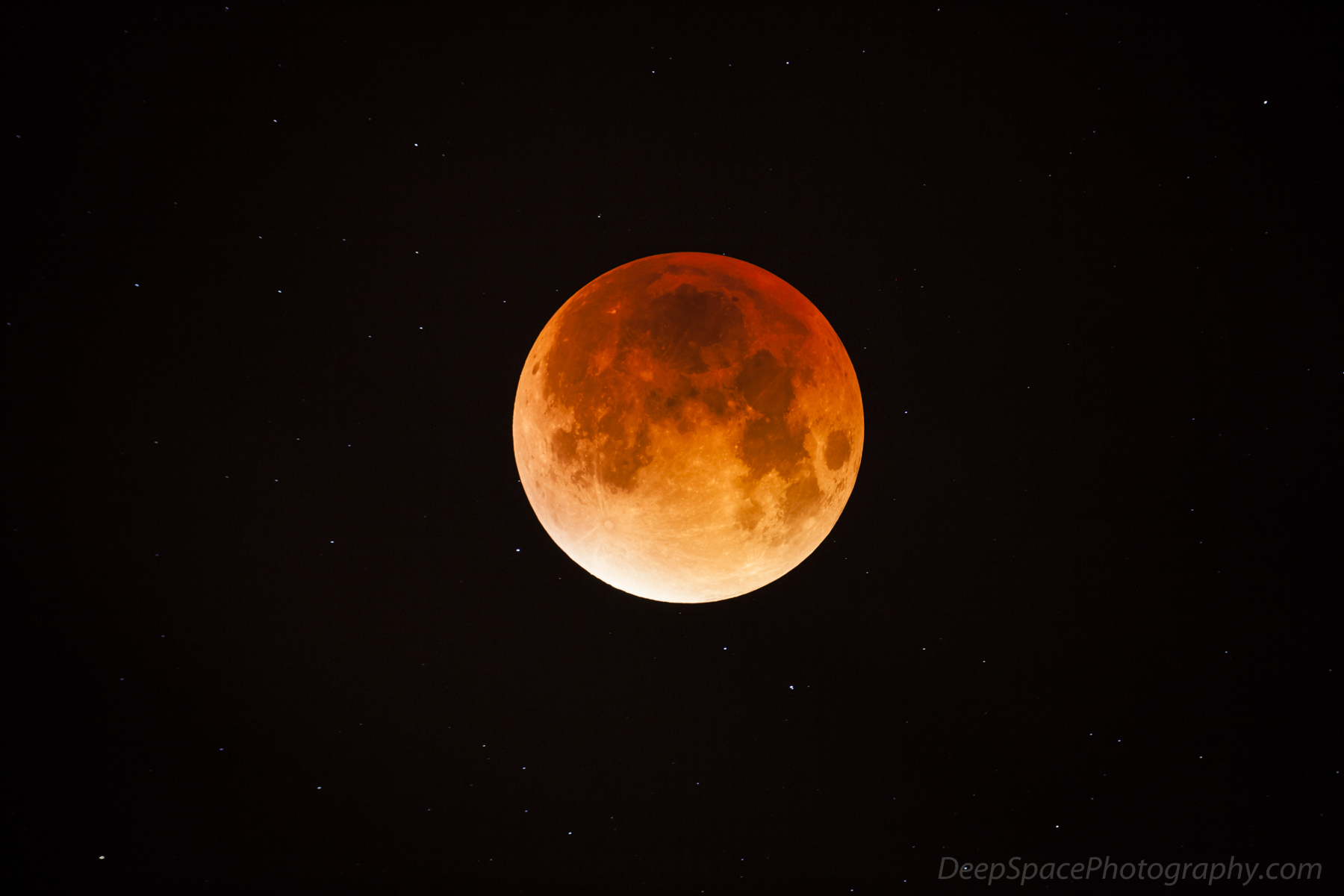Total Lunar Eclipse of September 27th, 2015
It seemed ages ago. From this neck of the woods, it had been nearly five years since the last decent total lunar eclipse occurred. Three of us piled into a car already crammed with telescopes and photographic gear and drove west for hours to escape cloud cover. We ended up driving pretty much to Peterborough before escaping enough of the cloud cover so we could at least capture something at all. The night was December 21st, 2010 and it was a cool -20 Celsius. As totality neared, I could finally make out the moon through clouds that had thinned considerably. I remember saying, “Alright guys, this is it! We’ll miss totality if we keep driving. Let’s find a side road to set up on.” As luck would have it, there was a truck stop just up the road. We piled out and to this day I remark how quickly we had our gear set up and running. We managed to capture the eclipse that night just in the nick of time.
Fast forward five years to September 26th, 2015. The eclipse is now one day away and a number of us have been searching for days for a suitable spot to photograph the event. On one hand we want a spot high and dry to ensure we don’t get blanketed with a layer of fog. On the other we want to a find spot overlooking water so we can capture the reflection of the moon. Initial weather reports indicate we are going to be under a fairly large high pressure system. Clouds, it seems, won’t be an issue this time. Hurray! The North end of Lake Clear appears to be a great spot. We find a parking lot beside a beach that will be great to park our vehicles in. It overlooks the lake and will give us a perfect line of sight over the lake to the hills on the other side. Unfortunately, this will turn out to be too good to be true.
On the morning of September 27th, all of us wake up to learn the updated weather forecast has deteriorated. It now looks like there will be high level haze blanketing all of Eastern and Southern Ontario. Of course it’s always difficult to read the weather models in advance and what looks like haze now can turn out to actually be clouds. We scramble to find a new location over the course of the next three hours. We consider places like Lac Simon up in Quebec since it looks like it will give us more time until cloud cover rolls in. Again, a beach at the north end of the lake looks promising on Google maps. A closer look at a street view image of the beach causes the realization that the spot will likely be crawling with people. The question becomes which threat is worse? Cloud cover or crowd cover? In the end though, Paul finds a spot near Upper Canada Village. On top of a small hill sits a monument to commemorate the Battle of Crysler’s Farm, erected in July 1963. It will create a spectacular foreground object for any time-lapse photography. The backdrop consists of the St. Laurence River. Perfect. We all agree on the spot.
“Almost like clockwork, the howls of coyotes all around us can be heard suddenly as the moon fully enters the Earth’s Umbra and totality starts.”
The drive takes an hour and a half to reach Upper Canada Village. I’m second to arrive. I can see Taras is busy setting up his telescope at the top of the hill as I make the drive up to the top. The moon has just risen and time is ticking, so I quickly set up my Dynamic Perception Stage R time-lapse unit. Programming the unit takes just a few minutes as I set the starting and ending point for motion as well as things like total duration of the sequence, exposure length, and interval length. I decide to put the unit fairly close to the monument to give a better impression of motion throughout the final video, but do so while carefully considering the moon’s forecast position in the sky. Once programmed, I give it the command to start and for the rest of the night it will function autonomously. Well almost. Since this will be my first light with the unit, I decide not to integrate the use of my Timelapse+ unit which can change the ISO on the camera. Changing the ISO will be necessary since the moon will be very bright at the beginning and end of the event but very dim right in the middle of the event. The ISO will have to be increased gradually leading up to totality and then decreased the same way as the moon exits Earth’s shadow. For tonight I will keep things simple and choose to manually inspect the image histogram throughout the night, making changes to the ISO as needed to keep the exposure correct for the 20 second exposures the camera will be taking. I look at my watch. One hour to go until the eclipse starts.
At this point I make a critical decision not to set up both telescopes on my mount using my side-by-side bar as originally planned. There’s just not enough time to properly set everything up and be ready for the eclipse. I can see cloud cover to the South West and it makes me nervous because at the rate it is advancing towards us it will likely arrive near totality. The Explore Scientific 127mm has a much longer focal length than the Takahashi FSQ106 EDXIII does so I decide to only use it. This way I’ll be able to acquire a much higher resolution image of the moon. The hour before the start of the eclipse goes by in what seems like an instant as I scramble to set up the telescope and all the photographic gear attached to it. Everything runs smoothly though and I manage to start capturing a time-lapse sequence using the telescope just before the eclipse starts.
Everything is set up and seems to be working. Now I can sit back and enjoy the event. The first thing I notice is that Paul and James still haven’t arrived. I later learn that they have set up on the opposite side of some trees next to the hill to avoid flooding the foreground of my first time-lapse sequence with their car headlights. True gentleman they are. The second thing I notice is just how bright the moonlight is. Crisp shadows from the monument stretch out across the lawn. A brilliant reflection of the moon can be seen on the St. Laurence River while the odd cargo ship slowly makes its way down the river.
As the Penumbral eclipse begins at 00:11 universal time (UT), it isn’t readily apparent that the moon’s disc is growing darker just yet. The Moon has only just started its journey through Earth’s Penumbra. It isn’t until 01:07 UT that the eclipse can readily be recognized. At this point The Moon enters the Earth’s Umbra and really starts getting darker. Stars start popping out all over the sky overhead. Increasingly Earth’s shadow covers The Moon and what looks like a partial eclipse gradually evolves into a total lunar eclipse as the moon fully enters Earth’s Umbra. The moon glows like a great orb held high in the sky and takes on a wonderful deep orange-red color as light from a thousand sunrises and sunsets all around Earth reflect off its surface. For the next hour we sit around enjoying the rare spectacle, marveling at how three-dimensional The Moon suddenly looks while eclipsed. Meanwhile, The Milky Way is has made its appearance too. With glare now gone from The Moon, The Milky Way now forms a grand arc from horizon to horizon. Almost like clockwork, the howls of coyotes all around us can be heard suddenly as the moon fully enters the Earth’s Umbra and totality starts.
As the eclipse progresses though, The Moon exits Earth’s shadow and the sky becomes increasingly brighter again. Clouds now threaten the remainder of the eclipse but never fully cover The Moon until the very end of the eclipse. As the sky gets brighter again, The Milky Way is the first to disappear. Stars start disappearing and shadows along the ground start reappearing as The Moon gets brighter and brighter. Eventually The Moon exits the Earth’s Penumbral shadow and the eclipse is over at 05:22 UT.

